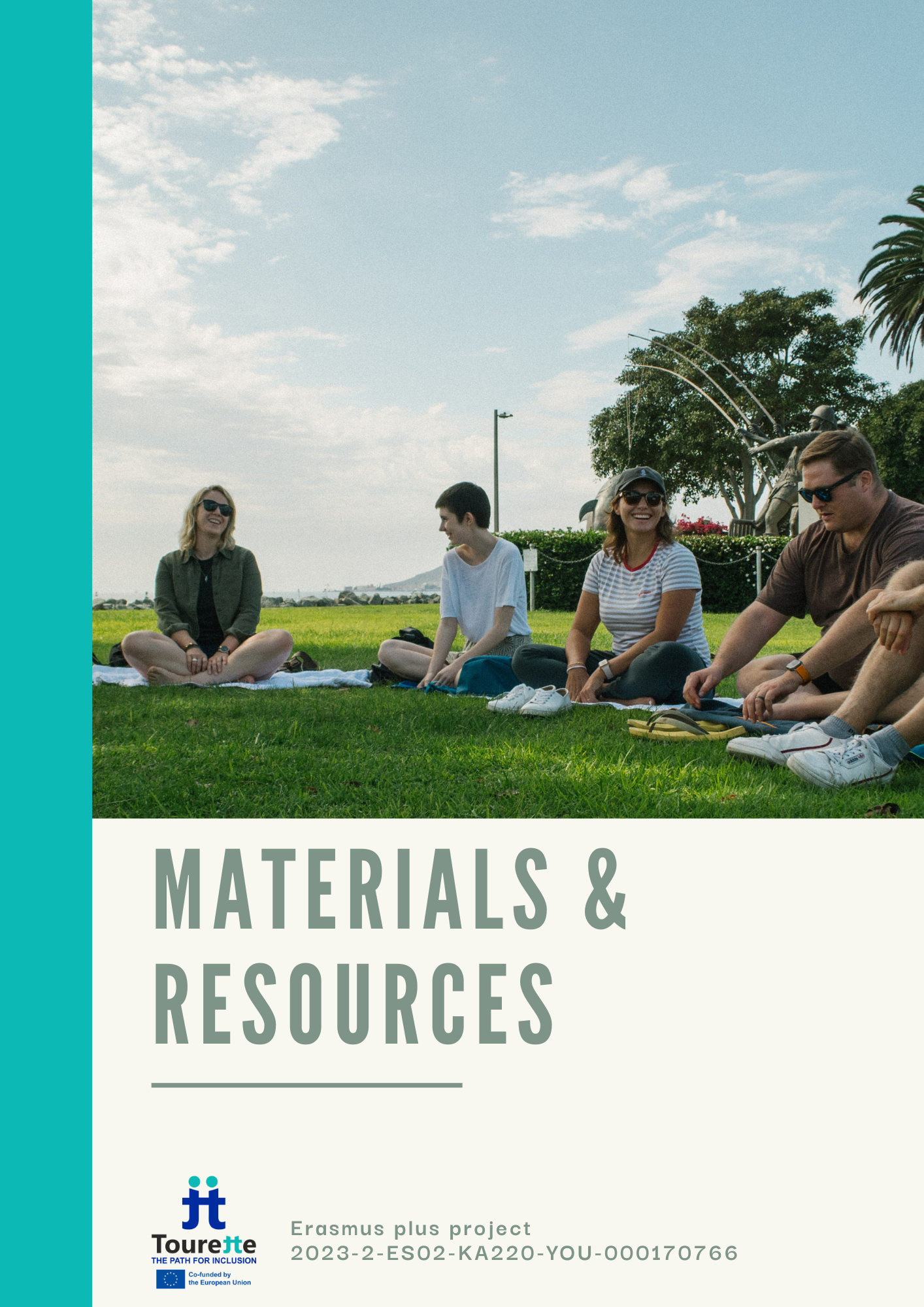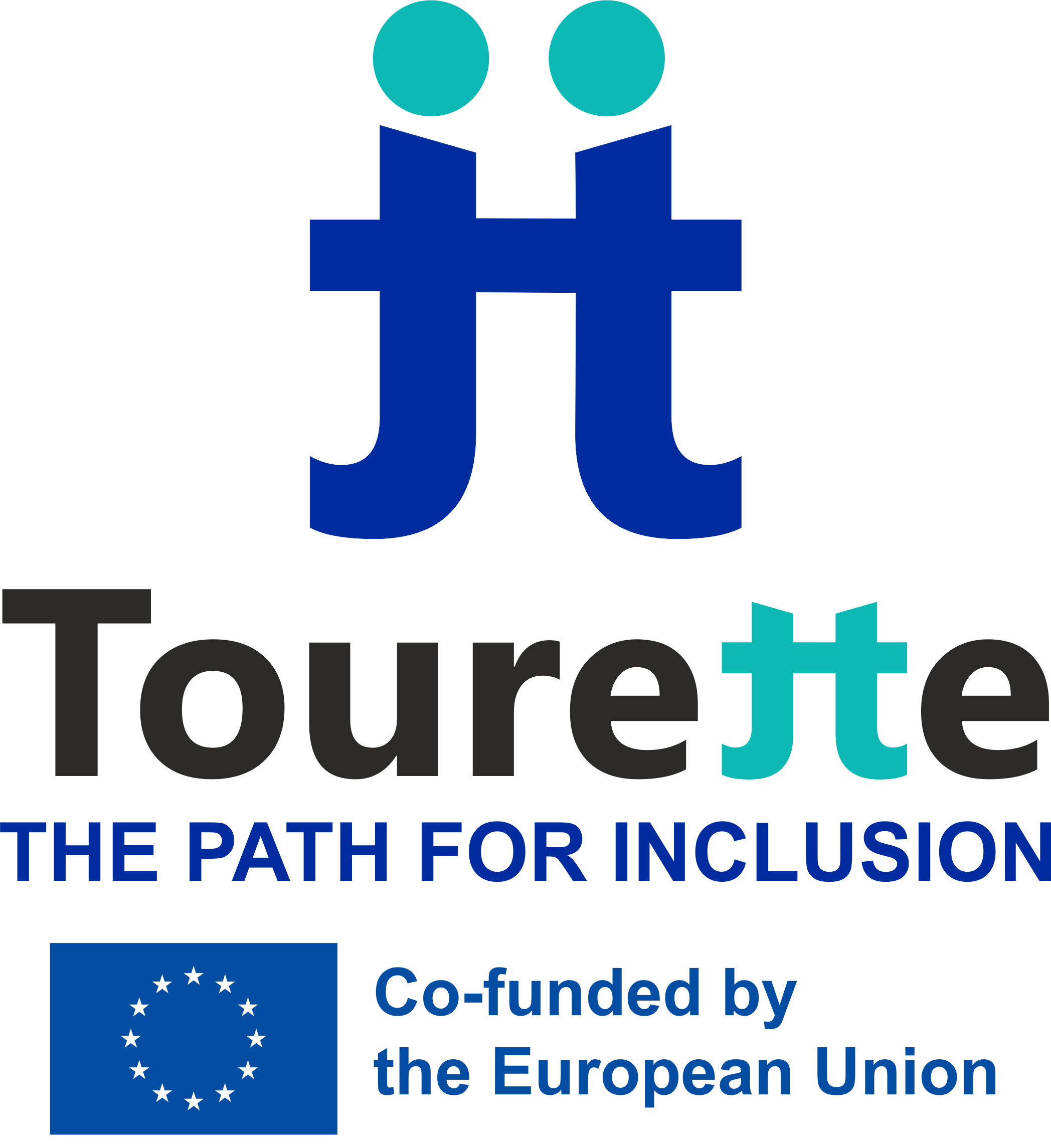FOR YOUNG WITH TOURETTE´S SYNDROME
In some cases, young people affected by TS may be reluctant to join organizations, associations or groups with other people with the same pathology, it may cost them a little to break that barrier to socialize or get involved in activities that have to do with the problems and difficulties with which they are forced to face in their daily lives.
A young person with Tourette Syndrome can stand out in several aspects, such as: Creativity, since, in some cases they have great artistic or musical abilities and this makes them able to express themselves in a unique and particular way. Empathy, the fact of battling every day with this disorder can lead them to be more understanding and supportive. Their experience also allows them to have a broader and more valuable insight into mental health and diversity issues. Resilience, because of their personal experience they can develop great strength and competence to overcome challenges.
FOR MEMBERS OF SOCIAL ENTITIES
These are volunteers, monitors, youth technicians and members of social entities (associations, NGOs…) whose main objective is to create inclusive environments and facilitate the social integration of young people with barriers. They are people who play different types of roles within their associations, such as support persons, guides, accompaniment in activities….
They are characterized by having a very proactive and empathetic attitude, as they understand the importance of having the right tools to be able to help and integrate these young people.
Although some of them have knowledge about Tourette syndrome, their level of training varies and they need the tools to acquire the skills and knowledge about how it affects young people and what are the best practices to interact with them effectively and ensure their integration in all the activities of the association.
DESCRIPTION
A set of 40 resources and materials (posters, strategies, catalogs, recommendations, videos…) for trainers, youth technicians and volunteers of organizations working with young people with Tourette Syndrome, as well as for the young people with TS themselves to facilitate the achievement of the milestones of the personalized itineraries.

RESOURCES
RESOURCE 1: SOCIAL IMPACT
RESOURCE 2: STRATEGIES TO ADDRESS AND RESOLVE CONFLICTS
RESOURCE 3: “CIGEEP” TECHNIQUE FOR CONFLICT RESOLUTION
RESOURCE 4: SELF-REGULATION AND CHALLENGING BEHAVIORS
RESOURCE 5: IMPACT ON EDUCATION
RESOURCE 6: THE IMPACT ON THE WORKPLACE
RESOURCE 7: EDUCATION
RESOURCE 8: THE IMPACT ON THE COUPLE AREA
RESOURCE 9: PRACTICAL TECHNIQUES
RESOURCE 10: SOCIAL STIGMA AND SELF-STIGMA
RESOURCE 11: CIVIC ATTITUDE
RESOURCE 12: DECALOGUE ON CREATIVITY
RESOURCE 13: COMMUNICATION
RESOURCE 14: PERMISSIBILITY OR AUTHORITARIANISM?
RESOURCE 15: IMPORTANCE OF CUSTOMS AND ROUTINES
RESOURCE 16: TENDENCY TO DENY THE PATHOLOGY
RESOURCE 17: IDENTITY CREATION GUIDELINES
RESOURCE 18: IMPULSIVITY MANAGEMENT
RESOURCE 19: EMOTIONAL IMPACT IN THE FAMILY ENVIRONMENT
RESOURCE 20: EXPERIENCE ON STRESS MANAGEMENT BY AN AFFECTED PERSON
RESOURCE 21: HOW TO DEAL WITH A STUDENT WITH (SEVERE) TOURETTE’S SYNDROME
RESOURCE 22: HOW TO DEAL WITH A COLLEAGUE WITH (SEVERE) TOURETTE’S SYNDROME
RESOURCE 23: DEALING WITH (SEVERE) TICS IN A DEMANDING ACADEMIC ENVIRONMENT
RESOURCE 24: WHY LEISURE ACTIVITIES ARE IMPORTANT
RESOURCE 25: PREVENTION OF ADDICTIVE BEHAVIORS
RESOURCE 26: THE IMPORTANCE OF GOOD SLEEP HYGIENE
RESOURCE 27: HOW TO CONVEY A MESSAGE CLEARLY AND EFFECTIVELY: KEY POINTS
RESOURCE 28: WHAT IS “EXPOSURE AND RESPONSE PREVENTION” AND WHY DOES IT WORK?
RESOURCE 29: HOW TO COPE WITH SENSORY HYPERSENSITIVITY: SIMPLE AND EFFECTIVE TIPS
RESOURCE 30: AN INSIDE LOOK AT THE IMPACT OF TOURETTE’S SYNDROME IN THE CLASSROOM
RESOURCE 31: HOW TO EXPLAIN TOURETTE SYNDROME
RESOURCE 32: MEASURES TO SAVE ENERGY, MINIMIZE RESOURCES AND PROTECT THE ENVIRONMENT
RESOURCE 33: RECOMMENDATIONS TO BRIGHTEN YOUR MOOD
RESOURCE 34: RECOMMENDATIONS TO COPE WITH SADNESS
RESOURCE 35: HOW GOOD TIME MANAGEMENT AND A WELL-STRUCTURED DAILY ROUTINE HELPS YOU GET ORGANIZED
RESOURCE 36: HOW TO REDUCE STRESS AND APPEASE TICS OR EMOTIONS LIKE ANGER
RESOURCE 37: FINDING SPECIALISTS OR GUIDING YOUTH WITH TS TO THE DOCTOR
RESOURCE 38: IMPORTANT VALUES AND QUALITIES IN INTERACTING WITH PEOPLE
RESOURCE 39: RECOMMENDATIONS FOR ORGANIZING SOCIAL EVENTS
RESOURCE 40: HOW TO WORK WITH DIFFERENT DISABILITIES
